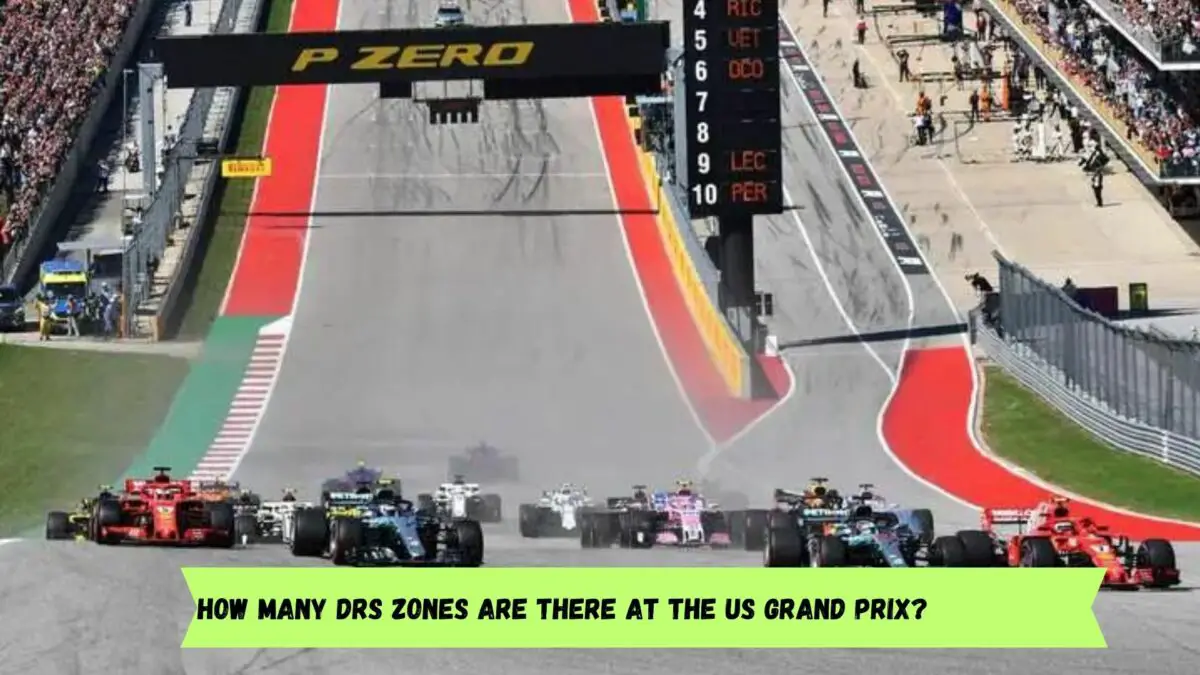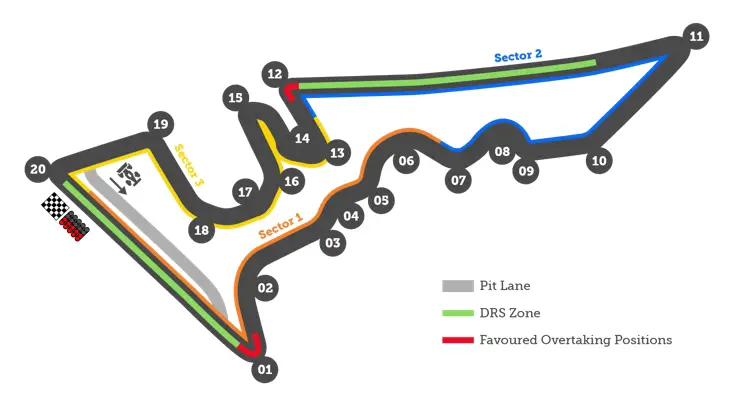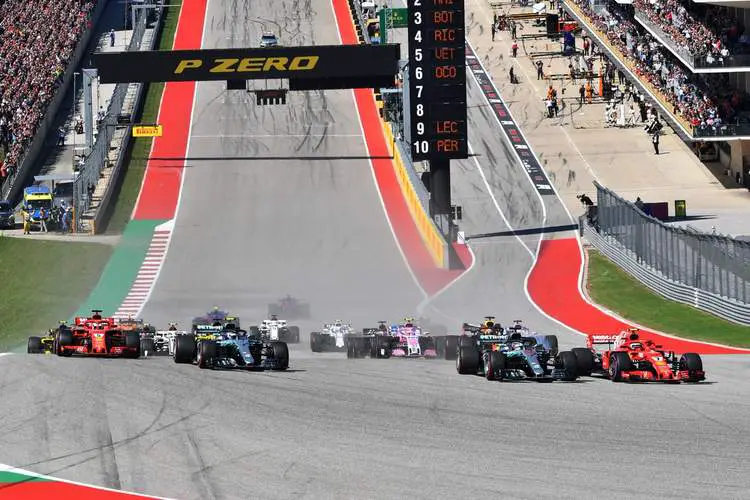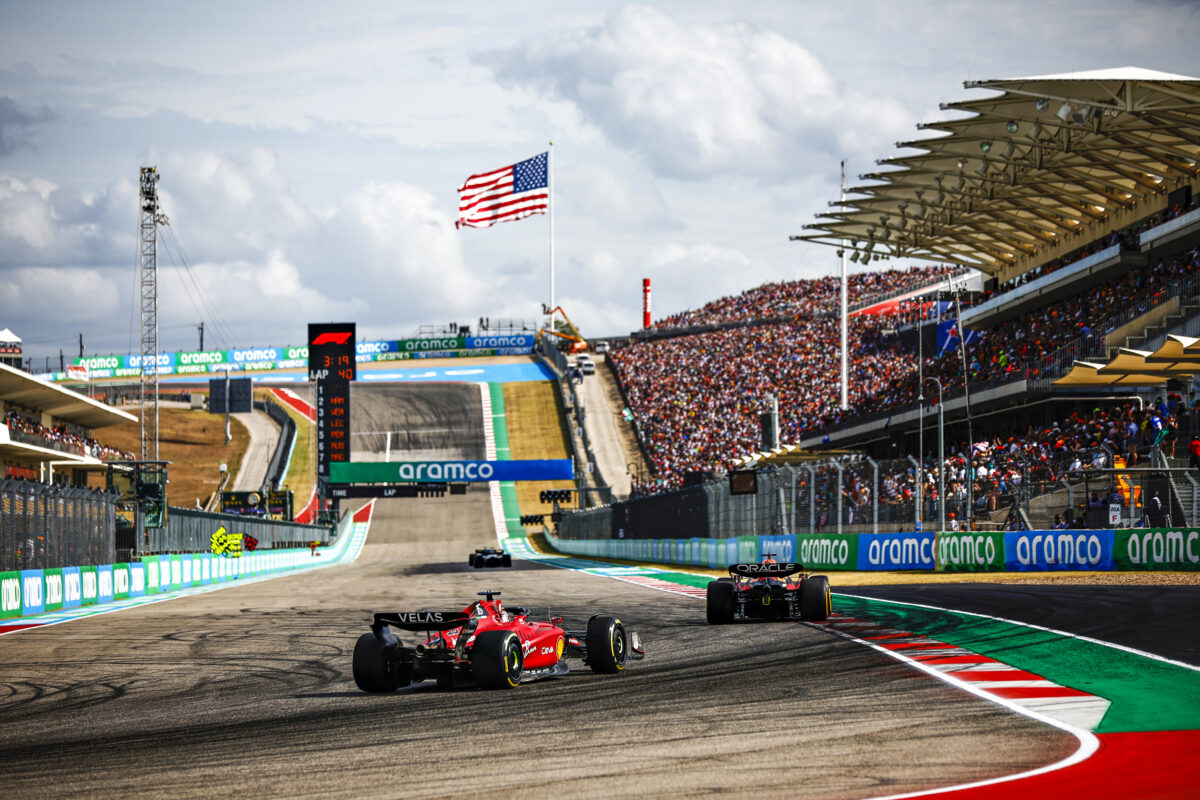The US Grand Prix is scheduled to take place from 20th to 22nd October at the Circuit of the Americas – let us take a look at the DRS zones at this venue

In the world of motorsport, the drag reduction system (DRS) is a technology that allows drivers to adjust certain parts of their car’s bodywork. This adjustment is designed to decrease aerodynamic drag, ultimately boosting the vehicle’s maximum speed and facilitating overtaking maneuvers.
Typically, DRS involves modifying the position of the car’s rear wing, and this adjustment is initiated by the driver’s commands. However, there are usually specific conditions associated with the use of DRS. For instance, in Formula 1, it’s required that the pursuing car must be within one second of the leading car when they both pass a designated point in order for DRS to become active.

DRS made its debut in Formula One in the year 2011, marking an exception to the general rule that prohibits the inclusion of movable components primarily intended to influence a car’s aerodynamics. This technology has also found application in other motorsport categories. It was introduced in the Formula Renault 3.5 in 2012, the Deutsche Tourenwagen Masters in 2013, Super Formula in 2014, the GP2 Series (later known as the FIA Formula 2 Championship) in 2015, and the GP3 Series (later the FIA Formula 3 Championship) in 2017. Notably, an adjustable wing was employed by the Nissan DeltaWing during the 2012 24 Hours of Le Mans, albeit with unrestricted usage.
In Formula One, the DRS operates by opening an adaptable flap on the rear wing of the car, with the purpose of decreasing aerodynamic drag. This adjustment provides an advantage to a pursuing car, making overtaking the car in front more feasible. It’s important to note that the DRS can only be utilized in a race after at least two racing laps have been completed, and it can be activated when the pursuing car enters a specific “activation” zone that’s established by the FIA (Fédération Internationale de l’Automobile). Additionally, there’s a requirement to wait for two laps after a safety car restart before DRS can be used.
What’s a DRS detection point?
The introduction of DRS aims to enhance competitive racing by promoting overtaking opportunities. The system achieves this by selectively granting the following car the advantage of DRS, allowing it to gain speed on straight sections of the track when pursuing another car.
To facilitate this, multiple DRS detection zones are strategically placed around the circuit. These zones are locations where the electronic timing system measures the time gap between two cars. If the time difference is equal to or less than 1 second, the following car becomes eligible to activate DRS when it reaches the next designated activation zone.

What’s a DRS activation point?
Each F1 race circuit is equipped with a set number of pre-defined DRS activation zones. These zones are typically situated on straight segments of the track, where drivers can engage their DRS system to minimize aerodynamic drag, subsequently boosting their speed and aiding in overtaking maneuvers. This choice of straight sections for activation is deliberate because DRS not only decreases drag but also reduces downforce. When activated while cars are navigating corners, it can lead to a decrease in rear downforce, which, especially at high speeds, can result in the cars losing control or spinning. It’s important to note that the DRS activation concludes as soon as the driver applies the brakes.
Circuit of the Americas (COTA) – DRS Zones
At the Circuit of the Americas (COTA), there are two DRS zones strategically placed to enhance racing and encourage overtaking. The first zone features a detection point 150 meters after Turn 10 and an activation point 250 meters after Turn 11, which is situated at the beginning of the long back straight.
The second zone, on the other hand, has a detection point 65 meters after Turn 18 and an activation point 80 meters after Turn 20, positioned at the start of the home straight. To strike a balance and prevent overtaking from becoming overly easy, the activation points for these two DRS zones are intentionally set at different distances along the main straights at COTA. This approach aims to maintain competitive racing while still offering opportunities for overtaking.

Zone 1: In the first DRS zone at COTA, the detection point is positioned 150 meters after Turn 10. If the following car is within one second of the car ahead at this point, it becomes eligible to activate DRS at the subsequent activation point. This first DRS activation point is located on the back straight, specifically 250 meters after exiting the previous corner, Turn 11.
When overtaking takes place in this zone, it typically means that if the slower car doesn’t actively defend its position, the car with DRS assistance will need to make the pass on the inside of the corner, deviating from the conventional racing line. This maneuver can compromise the exit speed of the car with DRS, offering the car that was overtaken an opportunity to counterattack into the following corner. This strategic positioning of DRS activation aims to maintain the competitive nature of racing at COTA.
Zone 2: In the second DRS zone at COTA, the detection point is strategically placed a couple of corners earlier, specifically 65 meters after Turn 18. This location choice is influenced by the proximity of the pit lane in that area.
It’s worth noting that the back straight at COTA is notably longer than the home straight, extending by approximately 1300 feet or 400 meters. Consequently, the DRS activation zone on the home straight is positioned just 80 meters after the final corner, Turn 20. This setup ensures that DRS can be used effectively on both straights, taking into account the unique characteristics of each section of the track at the Circuit of the Americas.
Conclusion
At the Circuit of the Americas (COTA), two strategically positioned DRS zones, featuring distinct detection and activation points, aim to enhance racing and encourage overtaking. The first zone, with its detection point 150 meters after Turn 10 and an activation point 250 meters after Turn 11, facilitates competitive racing on the back straight. The second zone, with a detection point 65 meters after Turn 18 and an activation point 80 meters after Turn 20, adapts to the track’s unique features on the home straight, ensuring balanced opportunities for overtaking while maintaining the competitive spirit of racing at COTA.
More Formula One News
- Lewis Hamilton doesn’t support IOC’s decision on Black Lives Matter gear during Olympics
- Max Verstappen left surprised as he reaches 100 race milestone with Red Bull
- Damon Hill left in awe after Lewis Hamilton racks up 100 poles in F1 ahead of 2021 Spanish GP
Follow our dedicated Formula One page for instant Formula One news and updates

